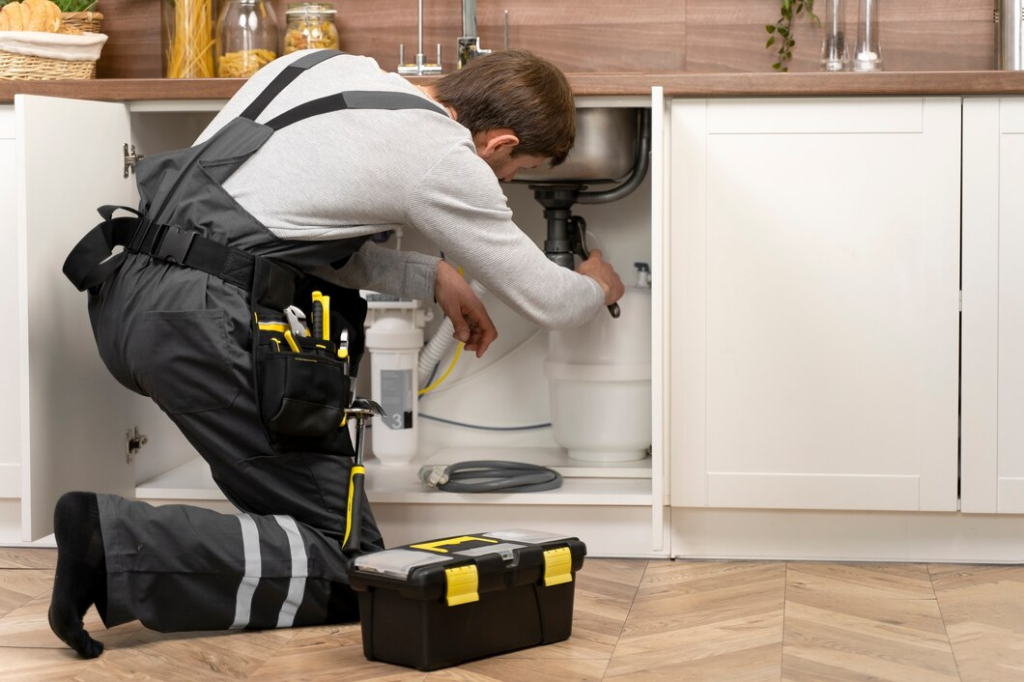Maintaining a functional and efficient plumbing system is crucial for the comfort and safety of your home. From ensuring clean water supply to handling waste effectively, plumbing and sewer systems play a vital role in daily life. This guide will provide essential tips on maintaining your plumbing system, recognizing signs of sewer issues, and understanding when professional sewer repair is necessary.
Understanding Your Plumbing System
Your home’s plumbing system consists of two main subsystems: the water supply system and the drainage system. The water supply system brings fresh water into your home, while the drainage system removes wastewater. Both systems must function smoothly to ensure a clean and healthy living environment.
Components of a Plumbing System
- Pipes and Fittings: Pipes carry water to and from fixtures. Common materials include copper, PVC, and PEX.
- Fixtures: These include sinks, toilets, showers, and bathtubs, which use and dispose of water.
- Valves: Valves control water flow and pressure within the system.
- Water Heater: Provides hot water for various uses.
- Traps and Vents: Traps prevent sewer gases from entering your home, while vents allow gases to escape safely.
Common Plumbing Issues and Solutions
Leaky Faucets and Pipes
Leaky faucets and pipes can waste a significant amount of water and increase your utility bills. Common causes include worn-out washers, damaged seals, and loose connections. Regular inspection and timely replacement of faulty components can prevent leaks.
Clogged Drains
Clogged drains can result from hair, grease, food particles, and other debris accumulating in the pipes. Regularly cleaning drains with a mixture of baking soda and vinegar can help maintain smooth water flow. For persistent clogs, consider using a plunger or a plumber’s snake.
Low Water Pressure
Low water pressure can be caused by mineral buildup in pipes, leaks, or issues with the municipal water supply. Cleaning aerators and showerheads, fixing leaks, and checking the pressure regulator can help restore proper water pressure.
Recognizing Sewer Issues
The sewer system is responsible for transporting wastewater from your home to the municipal sewer line or septic tank. Identifying early signs of sewer problems can prevent extensive damage and costly repairs.
Signs of Sewer Problems
- Slow Drains: If multiple drains in your home are slow, it could indicate a blockage in the main sewer line.
- Unpleasant Odors: Foul smells from drains or around your property may suggest a sewer leak or backup.
- Gurgling Sounds: Unusual sounds from drains or toilets can indicate trapped air in the sewer line.
- Sewage Backup: Water backing up into sinks, tubs, or toilets is a clear sign of a sewer issue.
Common Causes of Sewer Problems
- Tree Root Infiltration: Roots from nearby trees can penetrate and clog sewer lines.
- Pipe Deterioration: Over time, sewer pipes can corrode, crack, or collapse, leading to blockages and leaks.
- Grease Buildup: Pouring grease down the drain can solidify and obstruct sewer lines.
- Foreign Objects: Items like diapers, sanitary products, and wipes can cause blockages when flushed.
Sewer Repair and Maintenance
Regular maintenance and timely sewer repair are essential to keep your system efficient and prevent health hazards.
Preventive Maintenance
- Regular Inspections: Schedule annual inspections by a professional plumber to detect potential issues early.
- Proper Waste Disposal: Avoid flushing non-degradable items and dispose of grease properly.
- Root Barriers: Install root barriers to prevent tree roots from infiltrating sewer lines.
Sewer Repair Techniques
- Hydro Jetting: This technique uses high-pressure water to clear blockages and clean sewer lines.
- Pipe Relining: A flexible tube coated with resin is inserted into the damaged pipe and inflated to form a new, durable pipe within the old one.
- Pipe Bursting: The old, damaged pipe is broken apart, and a new pipe is simultaneously pulled into place.
- Trenchless Sewer Repair: Minimally invasive methods like pipe relining and pipe bursting are preferred for their efficiency and reduced disruption to your property.
When to Call a Professional
While some plumbing and sewer issues can be addressed with DIY methods, certain problems require the expertise of a professional plumber.
Situations Requiring Professional Help
- Persistent Clogs: Repeated clogs in multiple drains may indicate a severe blockage in the main sewer line.
- Sewage Backup: Immediate professional intervention is necessary to address sewage backups and prevent health risks.
- Pipe Damage: Cracked, corroded, or collapsed pipes should be repaired or replaced by a licensed plumber.
Conclusion
Keeping your plumbing and sewer systems in good condition is vital for a healthy and efficient home. Regular maintenance, prompt repairs, and proper waste disposal can prevent most issues and extend the lifespan of your plumbing system. Recognize the signs of sewer problems early and seek professional help when necessary to avoid costly repairs and ensure the safety of your household. By following this essential guide, you can maintain a functional and efficient plumbing system, providing peace of mind and comfort for your family.

















